Building a Chicken Coop? Here’s What to Know First
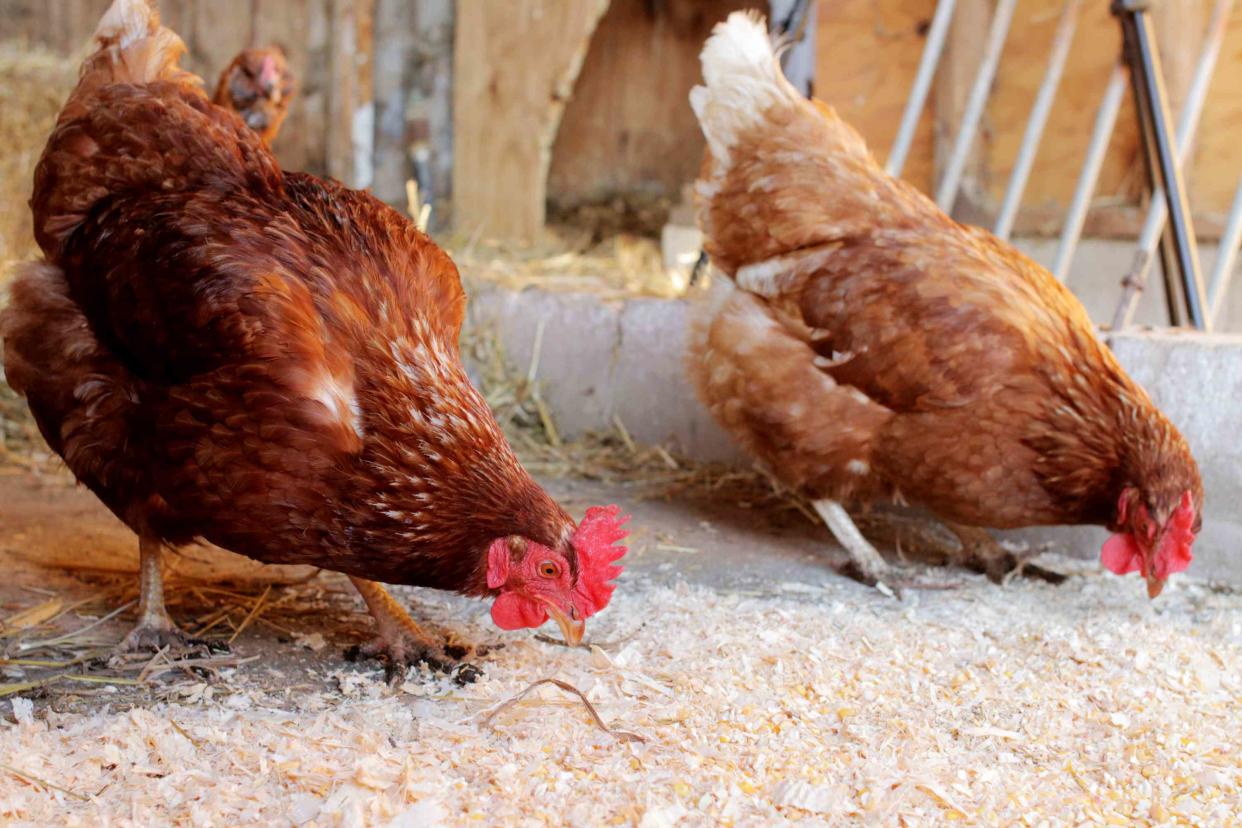
The Spruce / Steven Merkel
Reviewed by Amanda Rose Newton
Building a chicken coop may seem like a daunting task at first. But, if you have some basic woodworking skills and a lot of patience, you can build a great coop that will house your hens comfortably for years to come.
From hen houses to A-frame coops, chicken tractors to hoop coops, there are a variety of chicken coop styles that could work for your needs. You'll decide on the type of coop and the right size based on the breed and number of chickens you have in your flock.
Beyond your choice of style and what's best for your chickens, it's critical that all chicken coops are predator-proof and able to withstand different weather conditions. But even DIY chicken coops that are built on a budget using repurposed chicken coop supplies and materials like pallets or repurposed sheds can be sturdy and safe for your animals.
Whether you decide to go the premade or DIY route, here's what you need to know before you start building your first chicken coop.
13 Free DIY Chicken Coop Plans
Consider the Basics
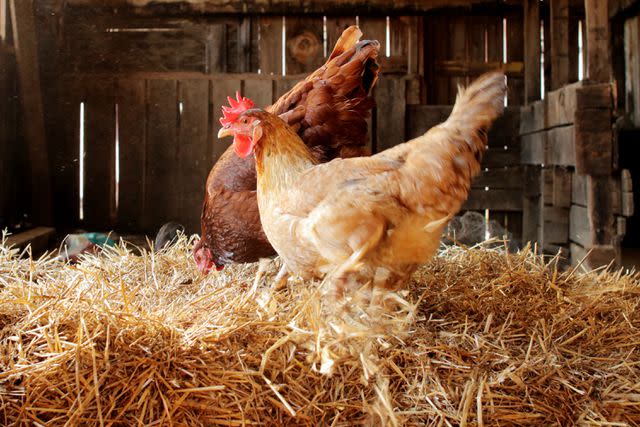
The Spruce / Steven Merkel
Before you get started, take the time to consider what you actually need in a chicken coop. Make sure you have solid plans, sketches, and have thought about all the variables involved in a coop—cost, size, portability, and ongoing maintenance.
Here are a few things to consider:
Size of your coop, based on the breed of chickens and maximum number
Whether a portable or stationary chicken coop is best for your yard and flock
How much this chicken coop will cost
The functionality of the doors; for example, chicken doors must be open inwards and not outwards; otherwise, your birds might find their way out
Whether you want automatic chicken coop doors
Functional human doors for the people that need to take care of the chicken
Windows and ventilation, such as sliding windows for hot summer days
Nesting boxes for hens
Roosts for sleeping at night
Easy-cleaning features
Choose Custom vs. Premade Chicken Coop Plans
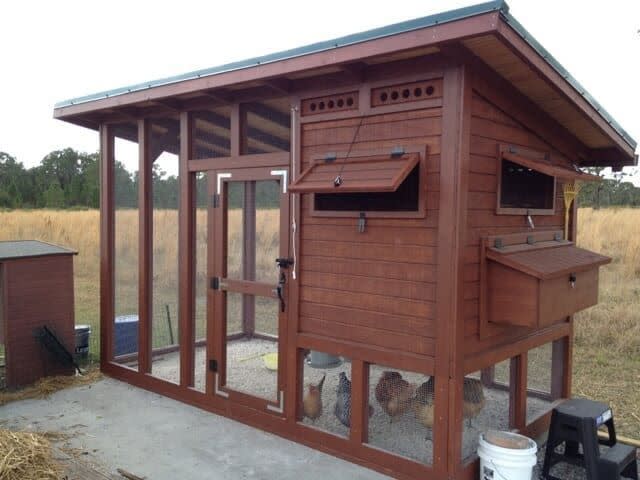
If you're new to woodworking and the world of do-it-yourself projects, find a chicken coop plan in a book or online that goes through the steps in detail. Use this as a helpful guide rather than trying to start from scratch.
You could choose from plans for various chicken coop styles, depending on what you want in your own yard. A small hen house or A-frame chicken coop could be the right choice, or you may need the extra space of a multi-level coop. You could do a hoop coop or a shed coop, or, if you want a more portable chicken coop option, a chicken tractor is a coop with wheels for easy transportation from one spot to another.
Determine Coop Size
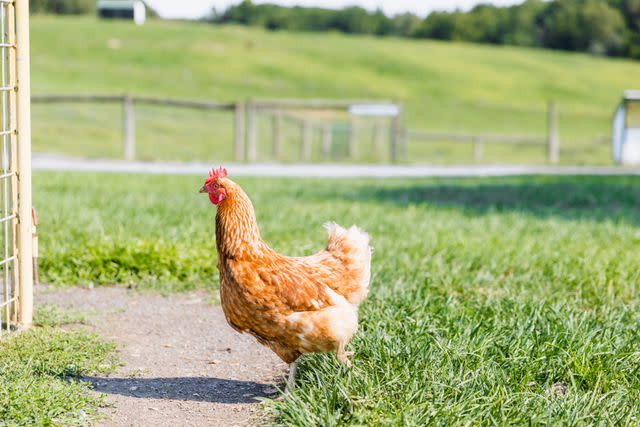
The Spruce / Anastasia Tretiak
The proper size for your chicken coop depends on the breed size and total number of chickens you have. Chickens are healthier and happier when they have more space to roost comfortably. Cramped coops make for aggressive birds pecking at each other and disease spreading faster.
In general, chickens need a minimum of 2 to 3 square feet per bird inside the coop and about 4 square feet per bird in the run. The bigger, the better. If your birds are cooped all winter (chickens don't like snowy surfaces), allow for 5 to 10 square feet per chicken. For birds confined in a chicken tractor without an outdoor pen, make sure you have a minimum of 5 square feet per bird.
Provide Ample Roosting Space
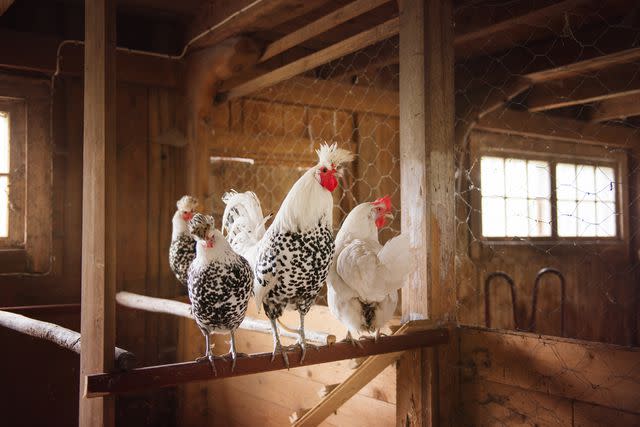
Getty Images/Maria Kallin
It may be surprising, but chickens sleep perched on roosts high above the ground at night, where they're out of reach of predators on the ground. This is why chickens love to roost or perch on woodpiles, the tops of their waterers or feeders, and even the roof of the coop. They also prefer to roost off the ground to discourage ground parasites. And, because they do not like sitting in their droppings, those dropping will accumulate beneath the roosts each night, so it's important to keep the roosts away from areas like feed boxes, water, and nesting boxes.
Provide roosting poles that are at least 2 to 3 feet off the ground (they don’t like to be too low). Plan for at least 6 to 10 inches of roosting space per chicken. If the roosting poles are more than 4 feet high, they will need a way to get up to them, such as by a plank with wooden strips for makeshift steps.
Include Ventilation
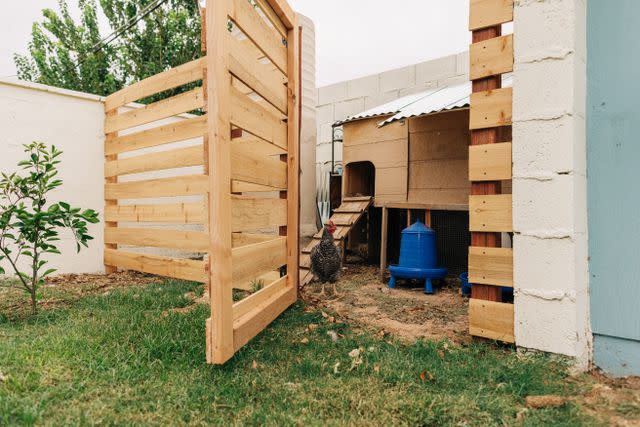
Getty Images/ Cavan Images
Ventilation in your chicken coop is key since the air within the coop can quickly grow stagnant, and chicken droppings can diminish the air quality inside the enclosed space without proper ventilation. You can add vents at the top of the coop near the roof and cover them with hardwire cloth to prevent predators from making their way in during the night.
You can also add windows the open fully during nice weather but, of course, cover these with hardwire cloth as well, or they'll provide an open door for predators.
Keep Predators Out
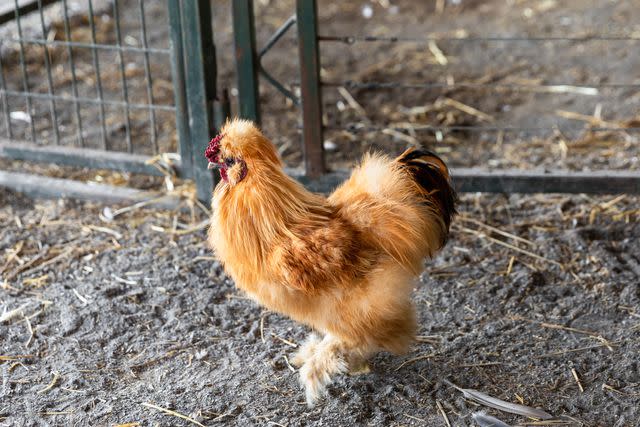
The Spruce / Anastasia Tretiak
Your coop needs to be sturdy, and it also has to have a solid floor and secure sides to keep raccoons and other predators out. These predators can be determined, and they'll find any possible entrance—or make their own. The coop needs to be locked down, with either a wire floor or hard floor (hard floors with deep litter are easier to clean!). On any opening, like windows or vents, use hardwire cloth in a 1/4" size to discourage predators from trying to make their way in. Then, install secure latches on doors to keep chickens in and predators out.
Save Money With Recycled Materials
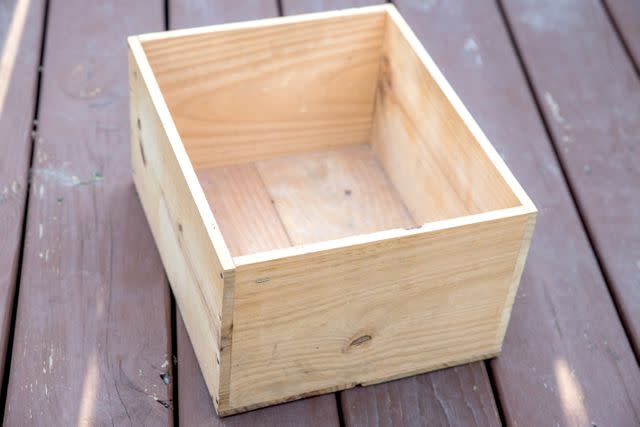
The Spruce / Adrienne Legault
Build a chicken coop cheaply by using recycled materials like wood pallets, old windows, or even repurposing an old shed. Avoid using worn, rotting wood or low-quality materials that can wear out quickly.
Wood pallets can be disassembled and built into a strong, durable chicken coop. An old shed can be converted to a chicken coop by clearing it out and adding nesting boxes, roosts, feed boxes, windows, chicken doors, and ventilation. Choose the best option for your coop based on the materials available to you.
Create Cozy Nesting Boxes
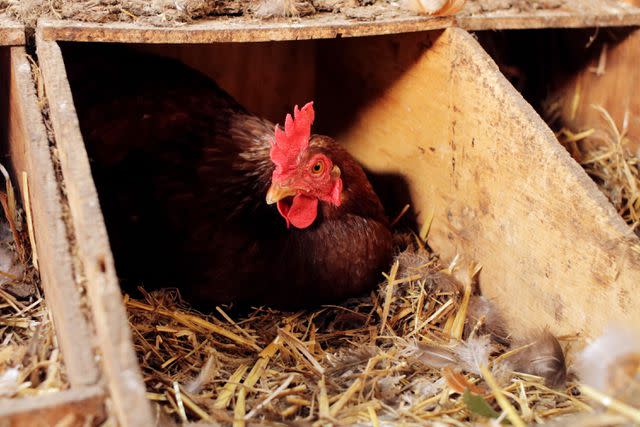
The Spruce / Steven Merkel
Aim for one nest box for every four to five hens at a minimum. The nest boxes also need to be a couple of feet off the ground, or they generally won't get used. Think about how you will access the nest boxes from outside the coop, so you can gather eggs easily.
These nesting boxes should be roughly 14" wide, 14" tall, and 12" deep for large breeds, while medium size breeds could be happy with 12" wide. Keep these boxes in a cozy spot, not in front of a drafty window and lower than roosts since you want to avoid chickens roosting in their nesting boxes.
Consider Movable Vs. Stationary Coops
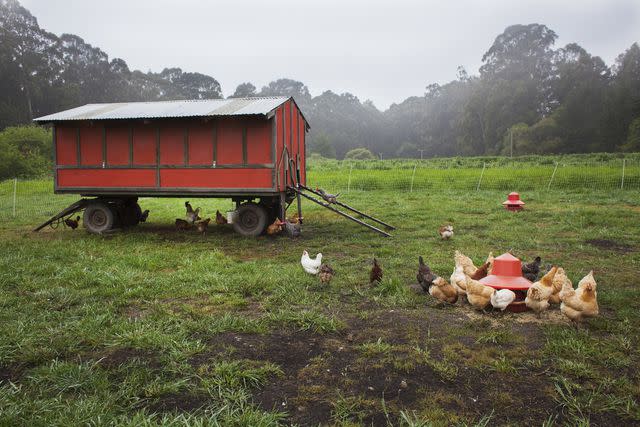
Stephen Zeigler / Getty Images
When it comes to coops, there are two options: portable and stationary. A movable coop is going to be smaller and lighter. You can move the birds to pasture them on fresh grass. Plus, portable coops are beneficial if you plan to move in the future, as you can bring the coop with you. Meanwhile, a stationary coop will be more substantial and more expensive. This fixed style is the best choice for a larger flock.
Make It Easy to Clean and Maintain
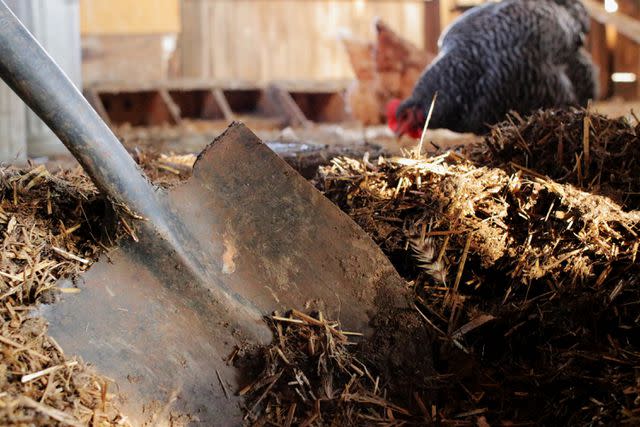
The Spruce / Steven Merkel
Anyone who's been around chickens know that their homes have to be cleaned and maintained regularly or you could face smelly and unhealthy conditions. The area under the roosts in the coop should be cleaned daily to weekly, while the bedding should be cleaned weekly to monthly. The entire coop should be deep cleaned twice a year.
Placing litter on the floor and under the roosts makes for easier cleaning since it can be discarded and switched out. To help in cleaning and providing a healthy environment for your chickens, place the feed and water boxes away from nesting boxes and roosts to prevent contamination.
Add Storage Space
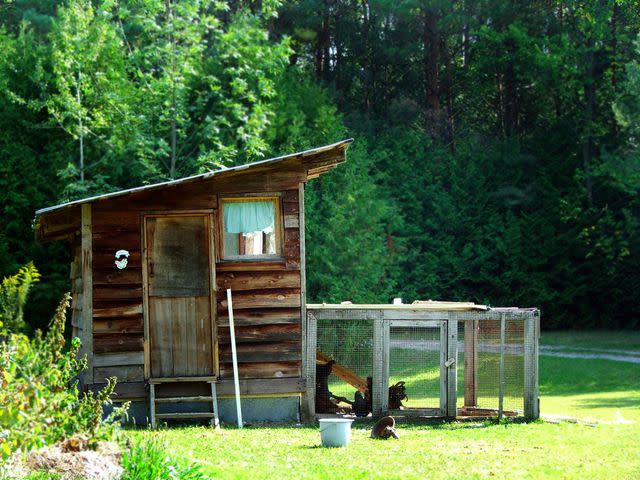
Getty Images/hankscorpio
Whether you have a small chicken coop or a large structure, there will likely be a need to store food and cleaning supplies. When adding storage, account for adding extra space to the coop, equaling approximately 3 square feet per chicken. This storage space should also be completely secure so the chickens can't have a feast because they were able to get into the extra feed.
Frequently Asked Questions
Is it cheaper to build your own chicken coop?
The price of building your own coop can vary depending on whether you DIY it from scratch or use premade plans. It can also vary if you use recycled materials or new items. But, generally, building your own chicken coop will be cheaper.
What not to do when building a chicken coop?
Make sure you don't neglect making your chicken coop both weatherproof and predator-proof. Without these two considerations, your chickens may not thrive or even survive. Also, don't forget adding proper nesting boxes, roosts, and ventilation, as well as making it easy for you to clean regularly.
How do I keep my chicken coop warm in the winter?
Since your chicken coop likely isn't climate controlled, you want to leverage the sun to keep the coop warm in the winter. Place the coop in a sunny area and use insulated windows that trap in the warmth of the sunlight.

